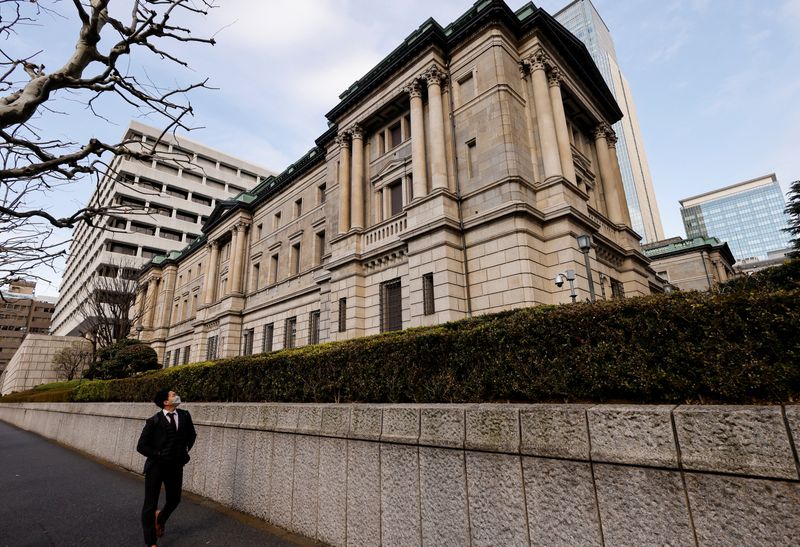(Reuters) - Japan's decades of ultra-low interest rates may reach a turning point as the central bank debates the fate of its yield control policy, which is creaking under intense pressure as markets repeatedly break a limit set less than a month ago.
Here is a timeline of key moments in the Bank of Japan's battle with decades-long deflation and low inflation.
1999
February - BOJ introduces zero interest rate policy.
2000
August - BOJ raises short-term target to 0.25%, a move criticised as premature as Japan suffers a domestic banking crisis.
2001
March - BOJ adopts quantitative easing (QE), shifts policy target from interest rates to pace of money printing.
2006
March - BOJ exits QE, shifts back to interest rate target.
July - BOJ raises short-term rates to 0.25%.
2007
February - BOJ raises short-term rates to 0.5% from 0.25%.
2008
October - BOJ cuts short-term rates to 0.3% from 0.5% to fend off economic shocks from the collapse of Lehman Brothers.
December - BOJ cuts short-term rates to 0.1% from 0.3%.
2010
October - BOJ cuts short-term rates to 0-0.1%, starts buying risky assets like exchange-traded funds (ETF) as part of a newly introduced asset-buying programme.
2013
January - BOJ adopts 2% inflation target, signs agreement with government pledging to meet the target "at the earliest date possible."
April - BOJ Governor Haruhiko Kuroda adopts new asset-buying scheme dubbed "quantitative and qualitative easing" (QQE), commits to achieving 2% inflation in roughly two years.
2014
October - BOJ expands QQE, increases purchases of government bonds, ETFs.
2016
January - BOJ adds negative interest rate policy, and applies a 0.1% charge to a small pool of excess reserves financial institutions park with the central bank.
July - BOJ eases monetary policy, ramps up ETF buying
September - BOJ adopts yield curve control (YCC), shifts policy target to interest rates from pace of money printing and introduces 10-year bond yield target of around 0%.
2018
April - Governor Kuroda re-appointed for a second term.
July - BOJ clarifies it will allow the 10-year yield to move 10 basis points either side of its 0% target.
2021
March - BOJ conducts "comprehensive assessment" of YCC to address its side-effects. It decides to taper ETF buying, widen the 10-year yield band to 25 basis points up and down the 0% target, and adopts new market operation that allows it to buy unlimited amount of 10-year bonds at a fixed rate.
2022
May - BOJ begins to offer buying unlimited amount of 10-year bonds at a fixed rate on a daily basis, as long-term interest rates approached its 0.25% cap more frequently than before
December - BOJ widens 10-year yield band to 50 basis points up and down the 0% target, a move aimed at easing some of the cost of prolonged stimulus.
2023

January - BOJ offers 1 trillion yen ($7.8 billion) worth of two-year funds at 0% interest to financial institutions against collateral, a move seemed as part of efforts to keep short-term government bond yields from rising too much.
($1 = 128.1700 yen)